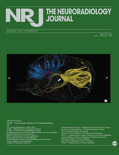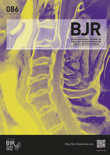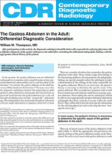
Clinical Neuroradiology
Scope & Guideline
Advancing the Frontiers of Neuroimaging.
Introduction
Aims and Scopes
- Advanced Imaging Techniques:
The journal prioritizes studies that explore advanced imaging modalities such as MRI, CT, and PET, particularly in their application for diagnosing and monitoring neurological conditions. - Interventional Neuroradiology:
There is a strong emphasis on papers discussing techniques, outcomes, and innovations in interventional neuroradiology, including thrombectomy and aneurysm treatment. - Artificial Intelligence in Imaging:
Research integrating artificial intelligence (AI) with imaging techniques is a core focus, aiming to enhance diagnostic capabilities and streamline clinical workflows. - Multidisciplinary Approaches:
The journal promotes multidisciplinary research that combines insights from various fields, including neurology, radiology, and engineering, to improve patient care. - Clinical Outcomes and Predictive Modeling:
Studies that evaluate clinical outcomes related to imaging findings and develop predictive models for treatment responses are frequently featured. - Neurovascular Pathology:
There is a consistent focus on understanding neurovascular diseases, including stroke, aneurysms, and vascular malformations, through detailed imaging analysis.
Trending and Emerging
- Integration of Artificial Intelligence:
The incorporation of AI for image analysis, decision support, and workflow optimization is rapidly gaining traction, indicating a shift towards technology-driven approaches in neuroradiology. - Telemedicine and Remote Training:
Recent studies highlight the rise of telemedicine and remote training solutions in neurointerventions, particularly in response to the challenges posed by the COVID-19 pandemic. - Quantitative Imaging Biomarkers:
There is an increasing focus on developing and validating quantitative imaging biomarkers that can predict clinical outcomes and guide treatment decisions. - Personalized Medicine Approaches:
Emerging research emphasizes personalized medicine in the treatment of neurological conditions, utilizing imaging data to tailor interventions to individual patient profiles. - Neurovascular Imaging Innovations:
Innovations in neurovascular imaging techniques, particularly those enhancing the assessment of acute ischemic stroke and aneurysms, are trending, reflecting a need for improved diagnostic accuracy. - Patient-Centered Outcomes Research:
There is a growing interest in studies that address patient-centered outcomes and quality of life following neurointerventional procedures, aligning with broader healthcare trends.
Declining or Waning
- Traditional Imaging Modalities:
There has been a noticeable decrease in studies solely relying on traditional imaging techniques without integration of advanced methods, as the field moves towards more sophisticated imaging solutions. - Basic Anatomy Studies:
Research solely focused on anatomical descriptions and classifications without clinical or interventional implications is becoming less common. - Single-Center Studies:
The prevalence of single-center studies has declined, with a trend towards larger multicenter collaborations that can provide more robust data and findings. - Historical Reviews:
Papers that primarily review historical perspectives or older techniques without contributing new insights or data have decreased in publication frequency. - Simple Case Reports:
There is a waning interest in publishing straightforward case reports that do not offer significant novel insights or advancements in clinical practice.
Similar Journals

Neuroradiology Journal
Connecting researchers to vital discoveries in neuroradiology.Neuroradiology Journal is a prominent publication in the fields of medicine, neurology, and radiology, published by SAGE PUBLICATIONS INC. Located in Italy, this journal has been a key resource since its inception in 2006 and continues to showcase vital research up to 2024. With an ISSN of 1971-4009 and an E-ISSN of 2385-1996, it provides an open platform for groundbreaking studies, effectively bridging clinical practices and advancements in imaging techniques. Holding a respectable position in Q3 of the 2023 category rankings for medicine, neurology, and radiology, the journal caters to a diverse audience of researchers, professionals, and students, driving innovations in neuroradiology and influencing best practices worldwide. Although not an open-access journal, it remains accessible through various subscription options, ensuring that significant findings are distributed widely within the medical community. Stay informed on the latest research and trends that continue to shape the landscape of neuroradiological science through Neuroradiology Journal.

SKELETAL RADIOLOGY
Transforming Insights into Skeletal HealthSkeletal Radiology, published by Springer, is a preeminent journal dedicated to the field of radiology, specifically focusing on the anatomical and pathological aspects of the skeletal system. Covering a breadth of topics from imaging techniques to innovative diagnostic methodologies, it aims to enhance knowledge and expertise in the interpretation of musculoskeletal conditions. Operating under the ISSN 0364-2348 and E-ISSN 1432-2161, the journal has established itself as a key resource for researchers, clinicians, and medical professionals, boasting an impressive impact factor that reflects its scholarly significance. As of 2023, it holds a commendable ranking in the Q2 quartile for Radiology, Nuclear Medicine and Imaging, and ranks #123 out of 333 in the Scopus database, placing it in the 63rd percentile. With a history spanning from 1976 to 2024, this journal continually seeks to publish high-quality research that advances the understanding of skeletal radiology. While it does not currently offer Open Access options, its rigorous peer-review process ensures that only the most relevant and impactful studies are shared with the global academic community.

Radiologie
Innovating Diagnostic Accuracy Through Cutting-Edge ImagingRadiologie, published by SPRINGER HEIDELBERG, is an emerging journal dedicated to the fields of radiology, nuclear medicine, and imaging. With an ISSN of 2731-7048 and E-ISSN 2731-7056, this journal does not currently offer open access, providing a traditional yet respected platform for scholarly communication. Founded in 2022, it aims to advance the understanding of cutting-edge imaging techniques and their applications in clinical practice, contributing to improvements in diagnostic accuracy and patient care. Despite its recent establishment, Radiologie is positioned within the Q4 quartile category, reflecting its developing presence in the academic landscape, with a current Scopus rank of #231 out of 333 in its category. The journal serves as a vital resource for researchers, professionals, and students seeking to stay abreast of the latest developments in radiological science, imaging technology, and their clinical implications, ensuring ongoing engagement and advancement in this critical area of healthcare.

Japanese Journal of Radiology
Exploring Innovations in Imaging and Nuclear MedicineThe Japanese Journal of Radiology, published by SPRINGER, serves as a premier platform for disseminating cutting-edge research and clinical advancements in the fields of radiology, nuclear medicine, and imaging. With an ISSN of 1867-1071 and E-ISSN 1867-108X, this journal has established itself as a vital resource for practitioners, researchers, and students alike. Renowned for its high-quality peer-reviewed articles, it currently enjoys a respectable impact factor within the Q2 category of Scopus rankings, placing it in the 69th percentile among 333 journals in its field. The journal has seen consistent convergence of research from 2009 to 2024, further underscoring its commitment to advancing the understanding of radiological practices. Importantly, the journal offers Open Access options to facilitate widespread dissemination of knowledge, ensuring that vital research reaches its audience without barriers. Addressed in Japan, the Japanese Journal of Radiology plays a critical role in enhancing the global discourse on medical imaging, making it an essential resource for anyone engaged in this dynamic field.

SA Journal of Radiology
Empowering Radiologists: Sharing Knowledge, Shaping FuturesThe SA Journal of Radiology is a prominent open-access journal published by AOSIS, dedicated to advancing knowledge in the fields of Radiology and Ultrasound Technology. Established in 2004, this South African journal provides a platform for researchers, professionals, and students to disseminate valuable findings and share innovative practices in medical imaging. With an ISSN of 1027-202X and an E-ISSN of 2078-6778, the journal has become an important resource for those involved in radiological sciences, despite currently holding a Q4 ranking in both Radiological and Ultrasound Technology and Radiology, Nuclear Medicine and Imaging categories. Covering a converged time span from 2014 to 2024, the journal aims to promote scholarly communication and enhance the accessibility of research, positioning itself as a key player in the global radiological community. In a landscape where open access is increasingly critical, the SA Journal of Radiology is committed to fostering research collaboration and facilitating the exchange of ideas among clinicians and academics alike.

European Journal of Hybrid Imaging
Exploring the Future of Imaging in Medicine and ScienceEuropean Journal of Hybrid Imaging, published by SpringerNature, stands as a pivotal platform for scholarly discourse in the rapidly evolving fields of hybrid imaging technologies and methodologies. Since its inception in 2017, this open access journal has significantly contributed to the interdisciplinary interface of biophysics, computer science, molecular medicine, and radiology. With its current standing in the Q2 and Q3 quartiles across various categories, it provides valuable insights and research outputs pertinent to both academic and clinical practitioners. The journal's rigorous peer-review process ensures the highest standards of scholarly integrity, while its open access format promotes global accessibility and encourages collaborative research efforts. Covering a diverse range of topics pertinent to hybrid imaging, the journal serves as an essential resource for researchers, professionals, and students alike, fostering innovation and knowledge exchange within the scientific community.

BRITISH JOURNAL OF RADIOLOGY
Transforming Clinical Insights with Cutting-Edge ResearchBritish Journal of Radiology is a leading peer-reviewed journal published by the British Institute of Radiology, dedicated to advancing the field of radiology, nuclear medicine, and imaging. With a prestigious history dating back to 1945, this journal is at the forefront of disseminating cutting-edge research and innovations that significantly impact clinical practice. Currently enjoying a Q1 ranking in the field of radiology and Q2 in general medicine for 2023, it is recognized for its rigorous standards and high-quality content, ranking #87 out of 333 in Scopus for specialties related to Medicine, Radiology, Nuclear Medicine, and Imaging, placing it in the 74th percentile. Researchers, professionals, and students are encouraged to engage with the latest findings and comprehensive reviews presented within its pages, which contribute not only to academic discourse but also to the evolution of practice in the wider medical community.

Journal of the Belgian Society of Radiology
Advancing Radiological Knowledge for a Global CommunityThe Journal of the Belgian Society of Radiology, published by UBIQUITY PRESS LTD, is a pivotal resource in the field of radiology, nuclear medicine, and imaging. With an ISSN of 2514-8281 and E-ISSN of 2514-8281, this open access journal has been dedicated to fostering the dissemination of high-quality research since its establishment in 2010. Distributed from the United Kingdom, it offers a platform for innovative studies, case reports, and reviews that contribute to the advancement of radiological sciences. Despite its current Q4 category ranking within Scopus, the journal plays a critical role in sharing essential findings with a community of over 1,200 professionals and students eager to stay abreast of emerging trends and technological advancements in imaging. By enabling unrestricted access to its publications, the journal encourages collaborative research and knowledge exchange that transcends geographic boundaries, solidifying its importance for both established researchers and emerging scholars in the discipline.

Diagnostic and Interventional Imaging
Leading the Way in Diagnostic and Interventional BreakthroughsDiagnostic and Interventional Imaging, published by Elsevier Masson, stands as a prominent journal in the fields of Radiology, Nuclear Medicine, and Imaging. With a significant impact factor and a reputation for high-quality research, this journal is dedicated to advancing the understanding and application of diagnostic and interventional imaging techniques. It has achieved an impressive Q1 ranking across multiple categories including Medicine (miscellaneous) and Radiological and Ultrasound Technology, demonstrating its esteemed position within the academic community. The journal features cutting-edge studies and reviews, reflecting the latest innovations and practices from 2012 to 2024. Researchers, healthcare professionals, and students alike can look forward to accessing valuable insights that drive forward the discipline and improve patient outcomes, as evidenced by its robust Scopus rankings placing it among the top journals in its domain.

Contemporary Diagnostic Radiology
Innovative Insights in Diagnostic RadiologyContemporary Diagnostic Radiology is a pivotal journal in the field of medical imaging and radiology, published by Lippincott Williams & Wilkins. With an ISSN of 0149-9009 and an E-ISSN of 1938-1395, this journal serves as an essential platform for disseminating high-quality research and advances in diagnostic radiology and related disciplines. While it is categorized in the lower quartiles (Q4) for its performance in the 2023 rankings in both Neurology, Radiology, Nuclear Medicine and Imaging, and Surgery, its focus on emerging technologies and methodologies in imaging continues to provide valuable insights for practitioners and researchers alike. The journal’s scope includes innovative diagnostic tools, imaging techniques, and case studies, fostering collaboration and knowledge sharing in the medical community. Although it does not offer open access options, its commitment to contributing to the ongoing dialogue in clinical imaging is undisputed, making it an essential resource for professionals seeking to stay abreast of current trends and research in the rapidly evolving landscape of diagnostic radiology.